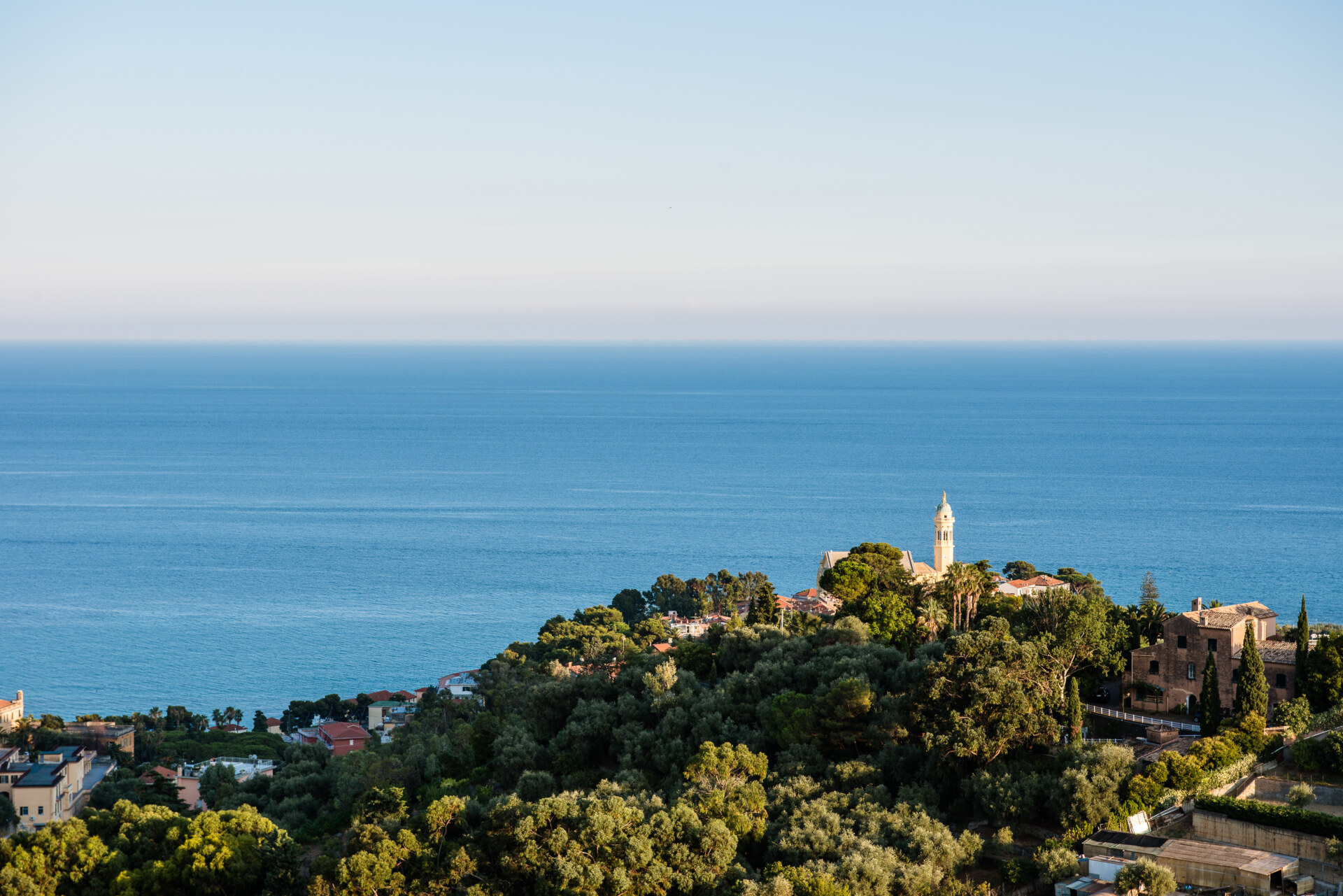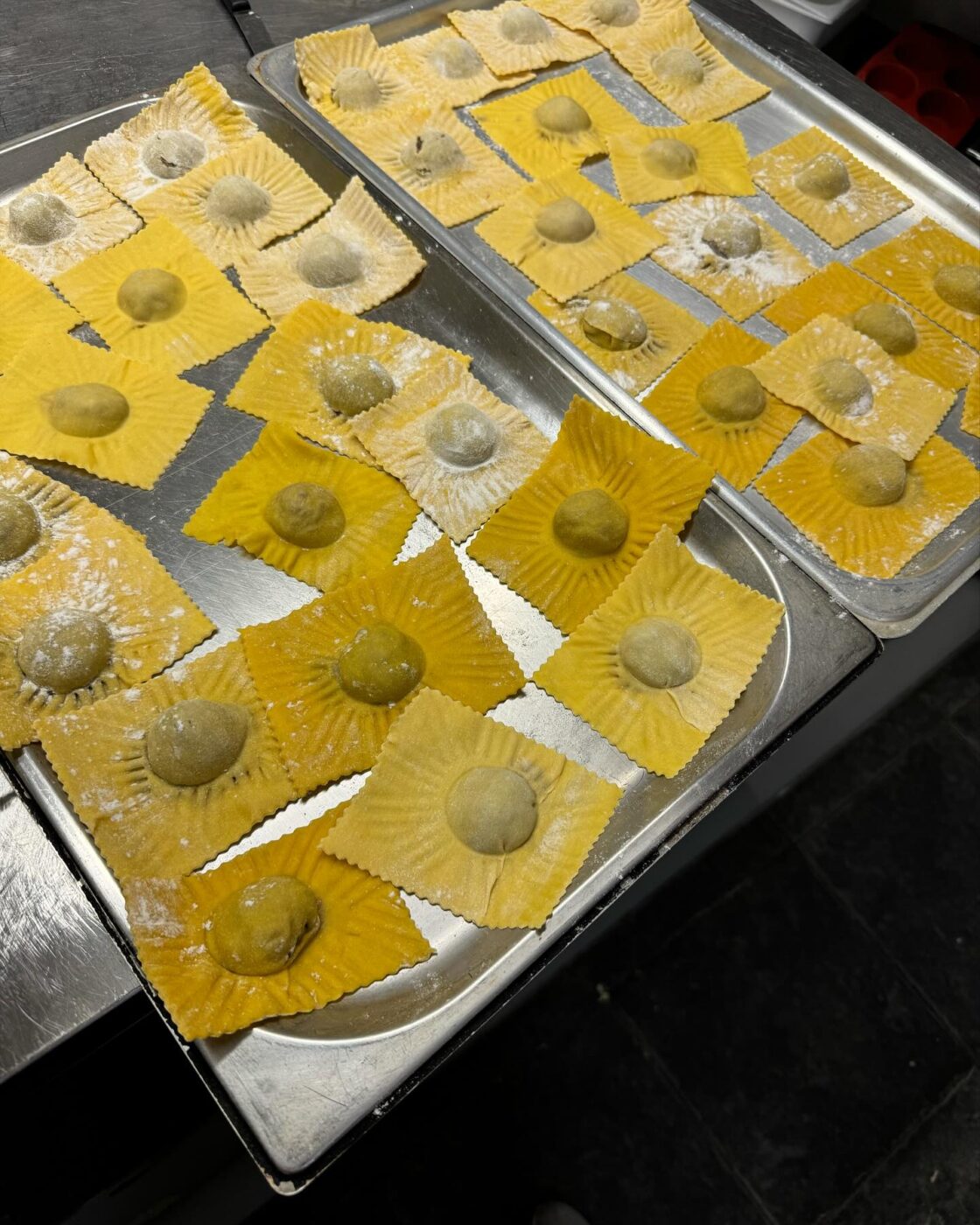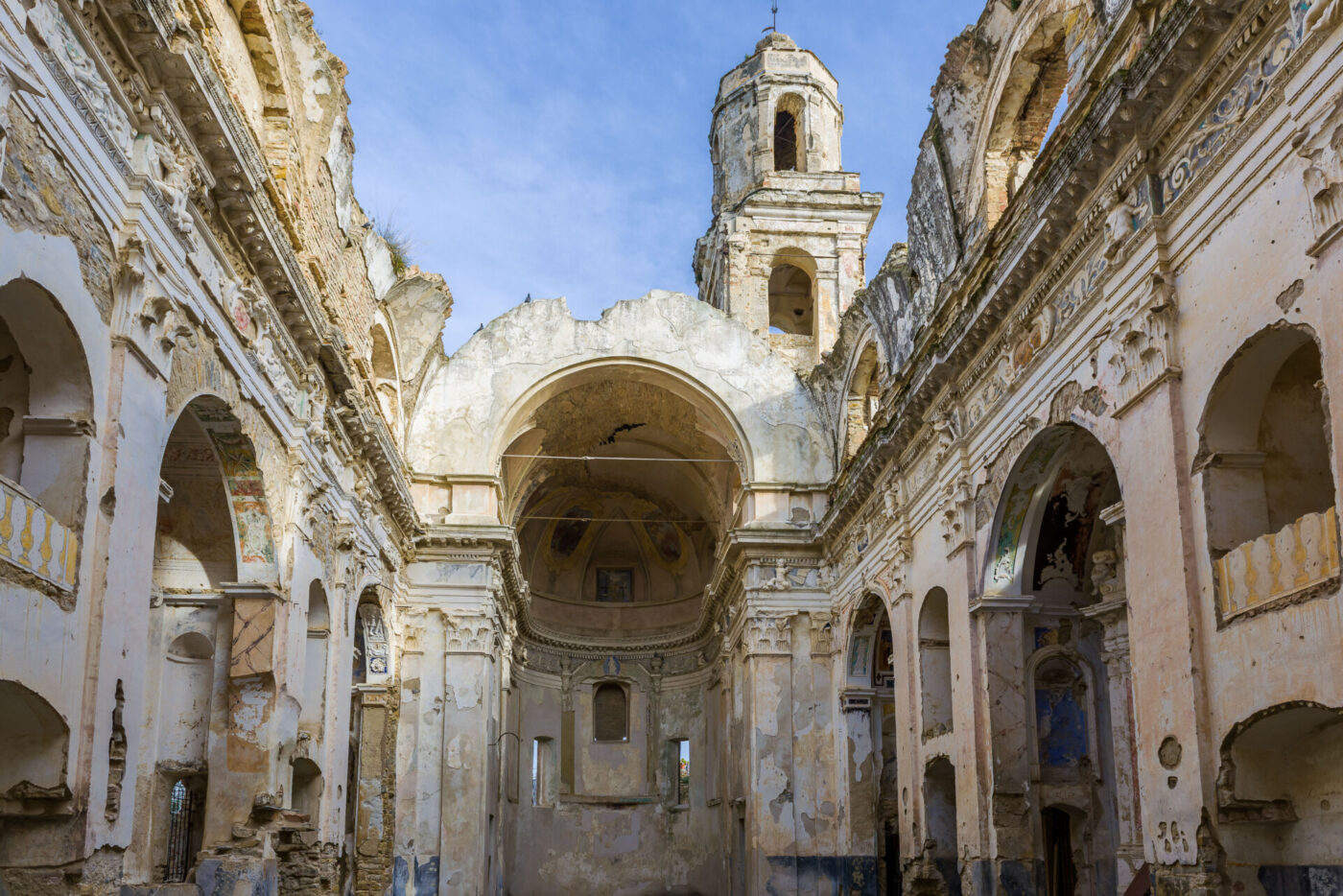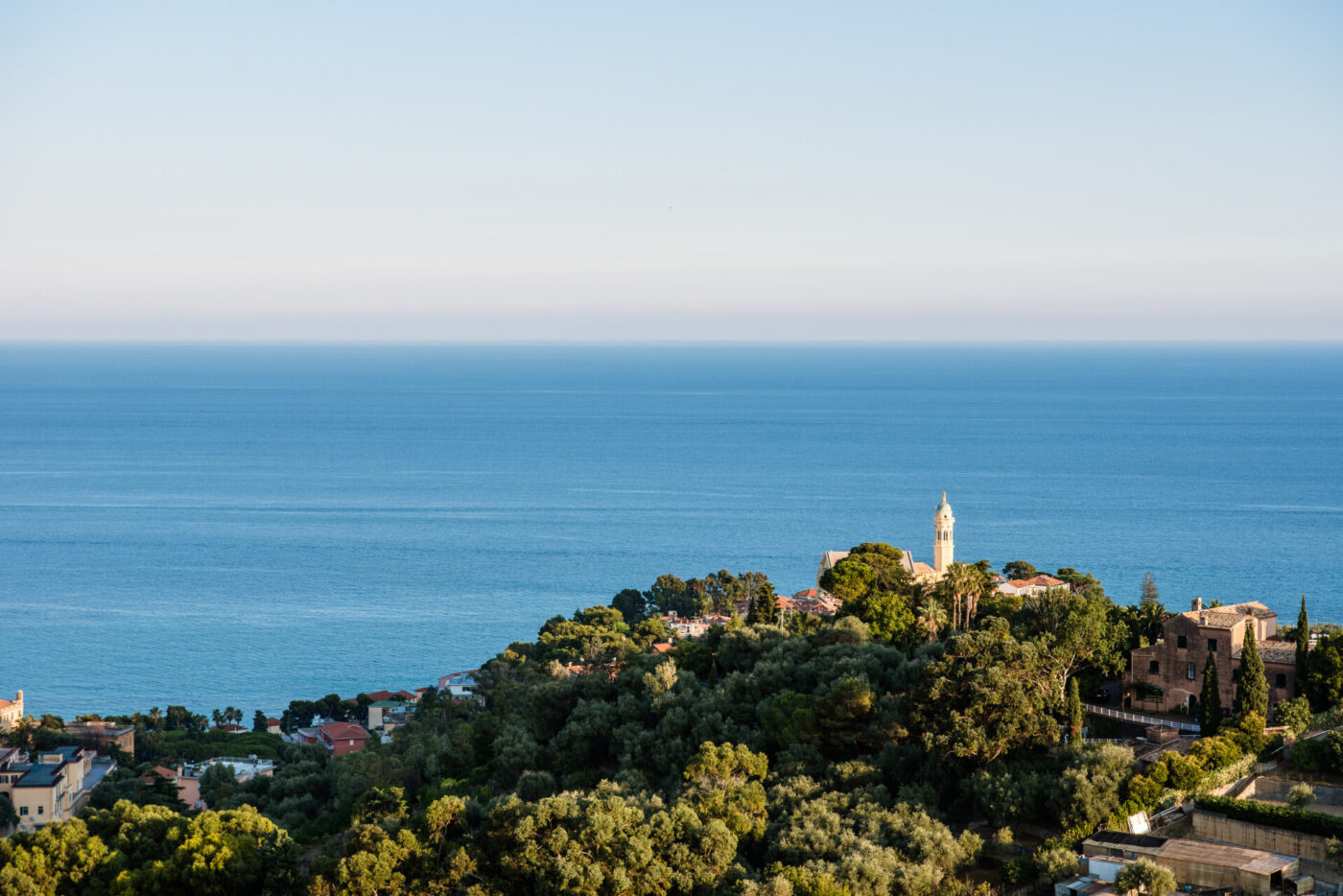The first time I stepped into the world of Bussana Vecchia, I was a child and I don’t retain a real memory of it. It’s more of a blurred image, a cloud of colors, of alleys going uphill, and of my father’s arms on which I clung for help in climbing those alleys. I remember the large church with no ceiling as if it was a temple from another world, alien and earthly at the same time, with the plants merging with the stones and binding them to the earth more than the concrete. Above all, of that first time in Bussana Vecchia, I remember the print bought in one of the workshops, which has always triumphed on the wall of my parents’ dining room. A jumble of walls that support themselves by climbing higher and higher up the mountain, giving way here and there to show now the interior of an artist’s studio, now a garden. And then a bathtub with a naked woman playing happily in the bubbles. So, perhaps for me, Bussana Vecchia has always been that feeling of freedom I get from the print, one that comes from the experience of bathing on the roof of a house that looks like it is about to collapse, but will not collapse because it rests on the shared passion of people who worship art.
And each time I subsequently returned to this village inland from Sanremo, I never entirely replaced the confused and poetic image I had consolidated in my memory. On the contrary, I think I have unconsciously sought, on each visit, that woman who firmly scrubbed her back under the Ligurian sky.
How Bussana Vecchia Became an Artists’ Refuge
To explain how Bussana Vecchia became the artist’s refuge it is today, we must start from its history, which both unites it and distinguishes it from other villages in Italy. If the tragedy of the earthquake and abandonment are not new, the ability to save and redevelop a place through love and faith in art is.
Perched inland, halfway between Sanremo and Arma di Taggia, Bussana Vecchia was hit by an earthquake in 1887 that claimed 644 lives, the force of nature also damaging houses and the 17th-century castle. The survivors were forced to abandon the village and relocate to a Bussana Nuova (a “new” Bussana), rebuilt near the sea with a quiet beach, 1930s pastel-coloured buildings, and the Sanctuary of the Sacred Heart of Jesus, an imposing basilica built in the early 1900s. The municipality of Sanremo closed all access to the ancient village.
Bussana Vecchia was used as a warehouse for building material until the 1940s, when some migrant families from southern Italy tried to occupy the houses, less damaged than the old inhabitants had been led to believe. The Sanremo administration, on which Bussana meanwhile depended, did everything possible to drive them away, blasting the load-bearing stairs and entrances to the remaining buildings, including the bell tower of the 15th-century church that stands in the center of the village.
Assailed by nature and then by men, Bussana’s fate seemed destined for abandonment and decay–that is, until the end of the 1950s, when a ceramist from Turin, Mario Giani (aka Clizia), with Sicilian artists Giovanni Fronte and Vanni Giuffré, visited the then-completely uninhabited village and decided to found an international community of rebel artists, complete with a statute to regulate social relations among its members. All the buildings in the village were made available to the community to be used as studios or ateliers, but without the possibility of claiming ownership. It was also forbidden to sell one’s art, creating an environment detached from the logic of the market and entirely devoted to artistic creation.
The group found themselves with a village at their disposal, but without water, electricity, phone lines, or sewage. Everyone set to work, creating those original structures that so stimulated my imagination as a child. “Then came the foreigners, who stayed here mainly in the summer because they had not completely restored the houses,” ceramicist Paolo Tartarini, who works in Bussana Vecchia, tells me. “It was the time of the hippies and this international community attracted people from even very high social classes who did bizarre things, such as Colin Wilmot and his wife Claire, a noblewoman who went around with her little crocodile.”
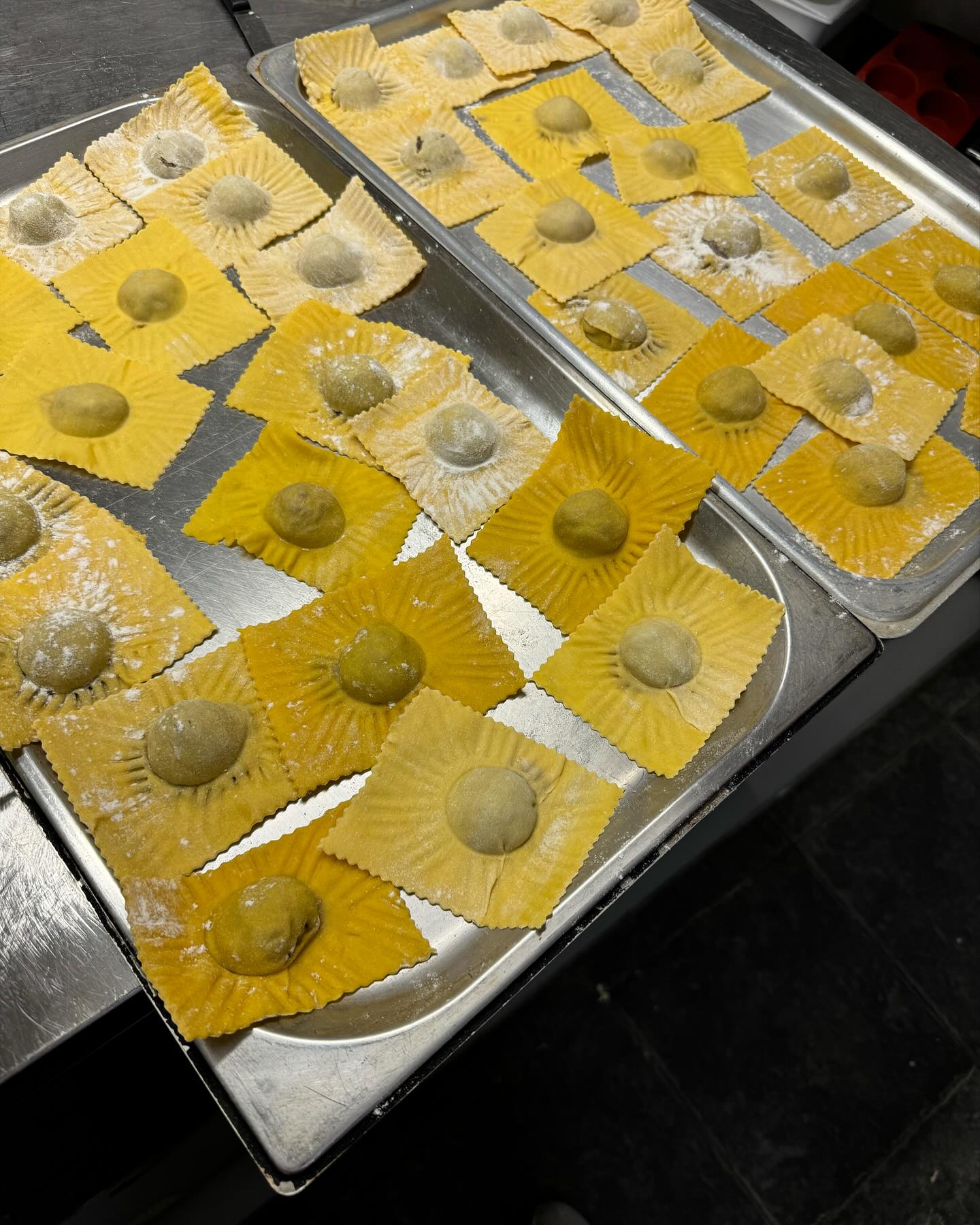
Courtesy of Osteria degli Artisti
At the end of the 60s, the first restaurant, now called Osteria degli Artisti, was built. You’ll come across it even if you walk around Bussana with your head in the clouds: the town has a circular structure, and the osteria is a focal point where the streets meet once they have finished their wanderings up the hill. Among its tables, the first artists gathered, as do visitors and locals today. Sit down at its tables, order some locally sourced acciughe fritte, and you may just happen to start chatting with a local artist.
In the 1970s, other buildings were restored, the connection to the Sanremo municipal waterworks was made, the sewage system was installed, and the electricity grid was connected. These modern comforts were necessities for the artists who chose to live here permanently, while the more transient, summertime community would have preferred to live in a less comfortable but more poetic candlelight. And their worries were partly confirmed: those evolutions brought more people to the village–and not just artists. Others began to arise for perceived business opportunities. With a growing community, Bussana Vecchia saw its rebirth, but it also found that its relationships between its inhabitants became more complicated, less solid.
As Silvano Manco, one of the artists that still lives in Bussana today, recounts, “From an artistic point of view, from ’78 to ’85 it was like being at Woodstock, especially in the summer, when a horde of creative people from all over the world arrived. At that time, Bussana Vecchia experienced a real renaissance, because, at the beginning, there were only a few of us and we had a strict statute.” He continues, “Then, we people of the second wave rebelled against the fact that we could not sell our work because we wanted to live off what we did. After ‘85, with the end of flower power and the lysergic [referring to LSD] world, the influx of artists diminished, but we still retained a hard core of creatives.”
It became harder to maintain the original spirit of the commune, and problems with the municipality of Sanremo grew–as did building speculation. While the first artists would leave free housing for the newcomers, asking only for a refund of the renovation works, property started to be bought and sold–a major clash with the legislative vacuum in which the village found itself. Paolo recalls, “In the 1990s, Fridays in music were organized, with the village lit up by ancient torches. From 2000 onwards, many shops closed, but we still tried to do activities such as traveling theater and concerts.”
Today, don’t come to Bussana expecting to travel back in the 70s, but rather to catch glimpses of the history that has sedimented in several layers around these alleys. If you decide to sleep here, you can choose from some really local B&Bs, such as Colin’s B&B and La Casina. If, on the other hand, you want a more communal experience, in line with the hippy spirit that lies at the origin of this place, pay a visit to La Barca, a real commune where everything belongs to everyone. In any case, be conscious of your choice and how it fits into the community.
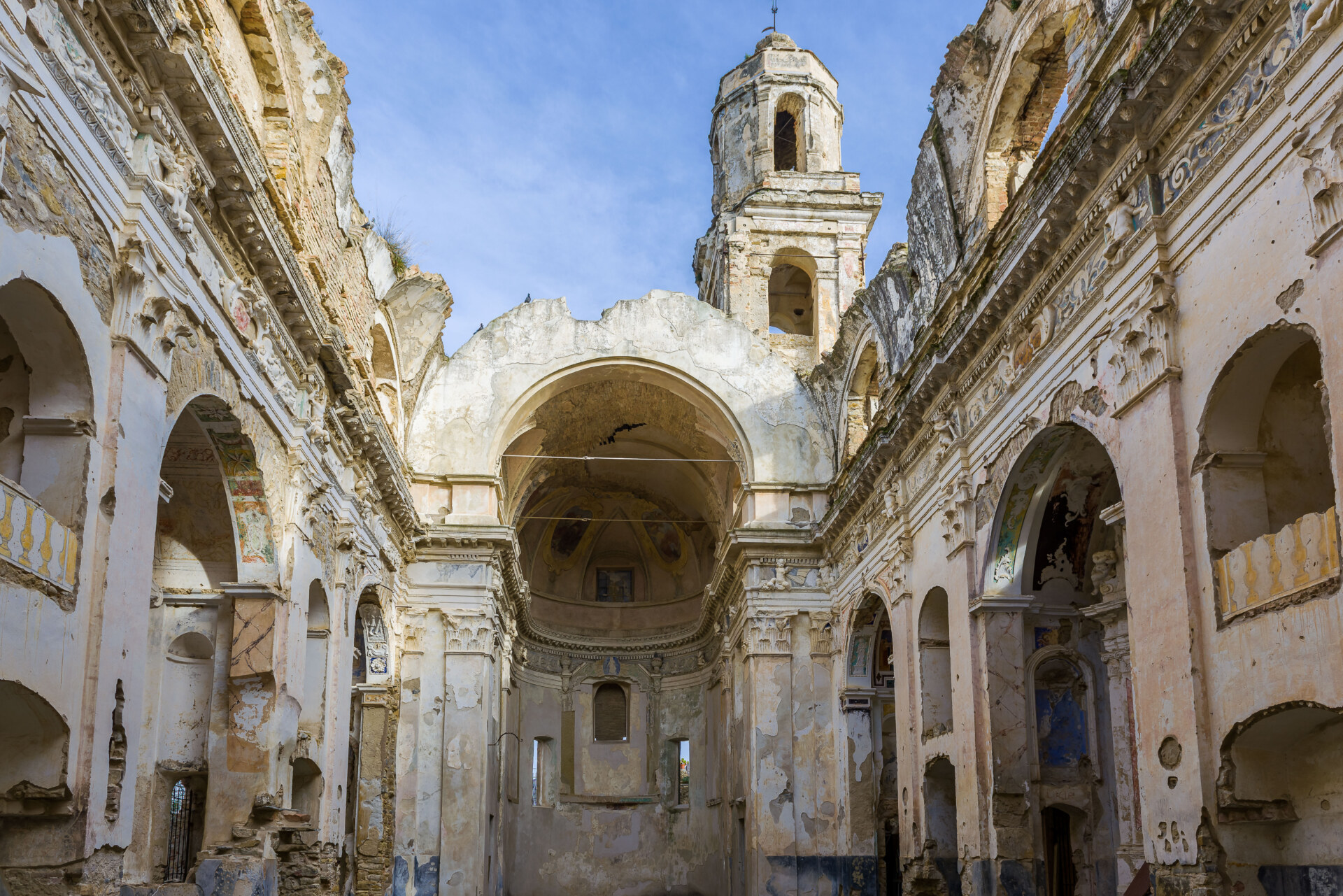
An ancient church in Bussana Vecchia without its roof, destroyed by an earthquake in 1887
The Artists of Today on Visiting Bussana Vecchia
I try to make Francis Shaw tell me crazy stories about crazy artists, but his memories are all about the small everyday difficulties. An English musician and composer, specialized in music for film, who teaches at several universities in the UK, Francis first arrived in Bussana in the mid-60s: “I had just finished my studies and a friend of mine had heard about Bussana. But I had just got a job as a music teacher in Rome and was moving there with my wife. On our return, however, we decided to drop in and were accepted by the leaders of the group.”
“We were given a house, and, from then on, we spent every summer with the kids fixing it up. When I can, I still go back there now.” He recounts children playing together among the ruins, generation after generation. “Where do you find another village ‘tutto abbandonato’ [‘completely abandoned’] with the offer of belonging to a little community? I used to hold concerts at night in my apartment–one or two every summer. The whole community would gather, creating that unique atmosphere of Bussana Vecchia.”
Paolo Tartarini arrived in Bussana Vecchia in 1994, following painter and sculptress Gianna Canova for love and starting to work with ceramics in a workshop that has seen many international guests; among them, Michail Gorbačëv and his wife Raisa, who visited Bussana Vecchia while in Sanremo for the Song Festival, since the quietness of the village was a safer choice for the couple compared to the crowded Riviera. “He was very interested in the art and they bought one of my pieces,” recalls Paolo.
Paolo still works in Bussana Vecchia, where he lived for 13 years before moving to a neighboring village. “My workshop is the first on the right where the cobblestones begin, hard to miss,” he tells me. “Tourism has changed a lot: there is an underlying curiosity, there are restaurants, but the interest in craftsmanship and art has dropped. It’s difficult for us to live off that here.”
Paolo continues on the problems with state property and the pressure from the Sanremo municipality to expropriate the inhabitants. But when I ask him if it’s still worth coming to Bussana Vecchia, he has no doubts: “I think it is always worth coming here, especially on any given day, not in August or at Christmas time. Letting yourself go, getting lost in the alleys, visiting the big church, discovering the works of Giovanni Fronte and looking for the artists’ ateliers–but with curiosity, trying to understand the difference between handmade and mass-produced products.”
Talking to these artists makes the nebulous dream of Bussana more concrete; acknowledging the challenges, the fatigue of artists who choose to remain faithful to their process, makes their journey more epic, their resistance entrenched in principles that time tries to tear down but which hold on like Bussana’s stones clinging to the rocks.
“I do two jobs that are my passions,” is how Silvano Manco, one of the resistant residents, introduces himself to me. “I am a musician and composer and I have been painting since ‘88.” Silvano is one of the “wise men” who has lived in the village since 1979; his Artitude studio is part of the church. The commune attracted him ever since he was a child, when he used to come by bicycle from nearby Arma di Taggia to play among the ruins and relive the stories of the partisans who had fought here for the liberation from Nazifascism.
Silvano makes no secret of his pride in saying, despite the struggle in keeping Bussana Vecchia alive, that he thinks “it’s the last self-managed squatting community in Europe, as well as the most important tourist hub in Sanremo.”
“I saw it as a child, as a teenager, as an adult, as an old man. It is a unique place. There are villages inland that are even more beautiful because they were rich, like Taggia, which was where Genovese families went on holiday, or like Dolceacqua. This instead was a peasant village, surrounded by olive trees and olive presses. There is no shortage of beautiful sights, but it is the history that makes it special,” he says. “Everyone falls in love with it, but I have a different relationship with the stones and walls of this place. I see people fall in love with the ruined church, with the meadow at the beginning of the village, but above all with the history, with being surrounded by artists.”
Aware of the changes and difficulties that Bussana Vecchia has experienced, and continues to experience, I wonder whether tourism is good or bad for a place whose value lies in its artistic integrity. Silvano puts my worries to rest: “I live in the house of one of the founders of the community, but it is no longer the same community. Tourism is what allows those who work here to resist.”
Returning to Bussana Vecchia
I have returned many other times to this village that I remembered as enchanted. And the good news is that, regardless of the moments in life I visited, Bussana always knew how to give me some magic. I arrived once on a summer night, climbing the hairpin bends leading up to the village (the road is not for the faint-hearted) in an old Dyane 6, discovering a circus tent under its starry sky. I witnessed the arrival of the Carabinieri who stopped the show, a reminder that everything here exists in limbo between the laws and the desire to express oneself. Another time, I reached the village on foot, following a bumpy path from Arma di Taggia, and I fell in love with it again, seeing it as it appeared among the fields and olive trees, rolled downwards, rather than upwards, as one normally encounters it coming from the road.
